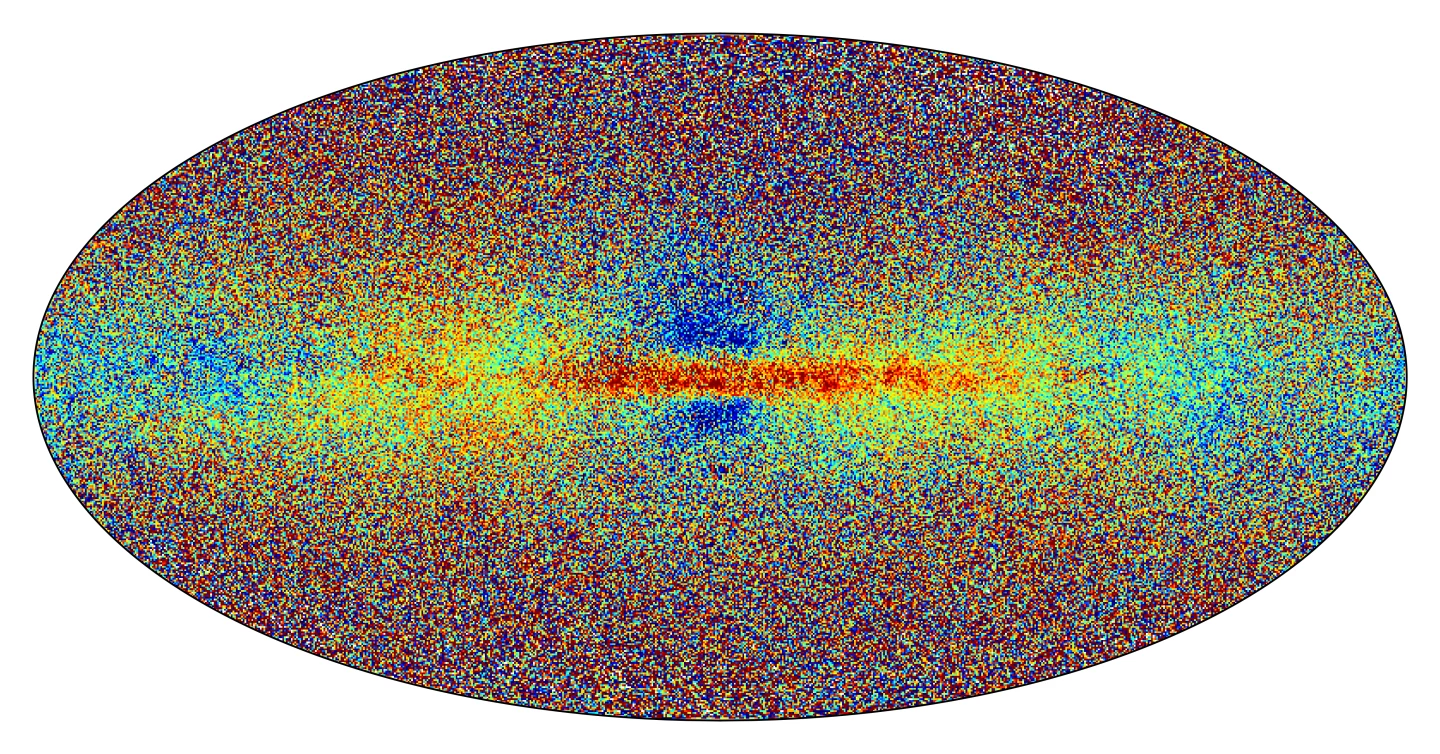The most comprehensive picture of the Milky Way galaxy just got even more detailed, as ESA’s Gaia mission has unveiled its third data release. The new dataset updates information on almost two billion stars, including their makeup and movements, as well as new catalogs of starquakes, binary systems, variable stars and other objects.
Gaia launched in 2013 with the goal of conducting a “galactic census” and creating the most comprehensive 3D map of the Milky Way ever. Its first major data release followed in 2016, detailing the brightness and location of 1.1 billion stars. In 2018, the second data release calculated the coordinates of almost 1.7 billion stars and the motion of 1.3 billion of those. And in 2020, an early glimpse of the third data release helped to chart the path of our own solar system around the galactic center.
Now, the full third data release has been made public. The new and improved Gaia catalog covers 1.8 billion stars, and includes data on their chemical compositions, temperatures, colors, masses, ages, motion, and classifications.
Of the 1.8 billion stars explored, 1.5 billion have been classified as particular types of stars. Data on the brightness, color (photometry), position, distance and proper motions (astrometry) is available for 1.5 billion stars in the catalog.
A new batch of spectroscopy data, obtained by splitting the light from stars into its constituent colors, was performed in low resolution for 470 million stars, and in high resolution for 5.6 million stars. This allows things like temperature, mass, age, color, metallicity and chemical composition to be determined for these stars.
From this, it was discovered that stars closer to the galactic center tend to have higher metallicities than those in the outskirts. That reveals much about the evolution of stars in different regions, since heavy metals are produced and distributed as old stars die, and incorporated into new stars born from the ashes.

Gaia also showed that it was able to detect starquakes in thousands of stars as large-scale vibrations rippled across their surfaces. Intriguingly, these were found on many stars that weren’t expected to produce starquakes, raising new questions.
The radial velocity was calculated for 33 million stars. This is a measure of how fast a star is moving towards or away from Earth, which adds the third dimension into our map of the motions of stars, rather than just how they move across the plane of the sky.
Around 10 million stars were found to be changing their brightness over time, and 813,000 systems were identified containing two stars orbiting each other. All up, that makes this is the largest catalog of variable and binary stars ever collected.
Closer to home, Gaia also gathered data on 156,000 asteroids and 31 moons in our solar system. Beyond the Milky Way, the catalog contains data on 2.9 million other galaxies, including their brightness, color, shape and history of star formation, and 1.9 million quasars, including their redshift, brightness and color.
This intensive data catalog will be extremely useful for astronomers going forward, who will be able to use the findings to explore new science in a range of ways.
The third Gaia data release was the subject of a series of papers that will appear in a special issue of the journal Astronomy & Astrophysics. The data is described in detail in the video below.
Source: ESA





